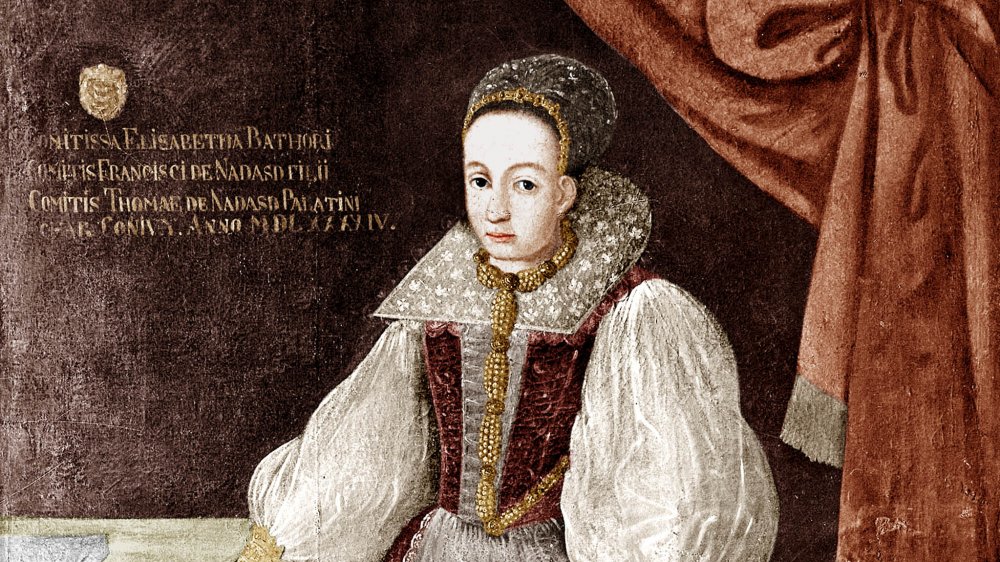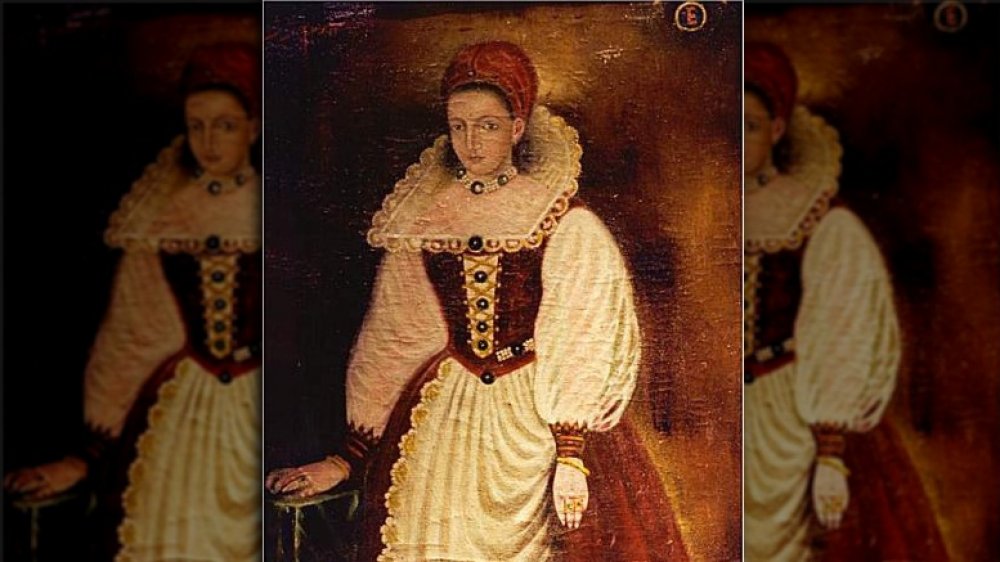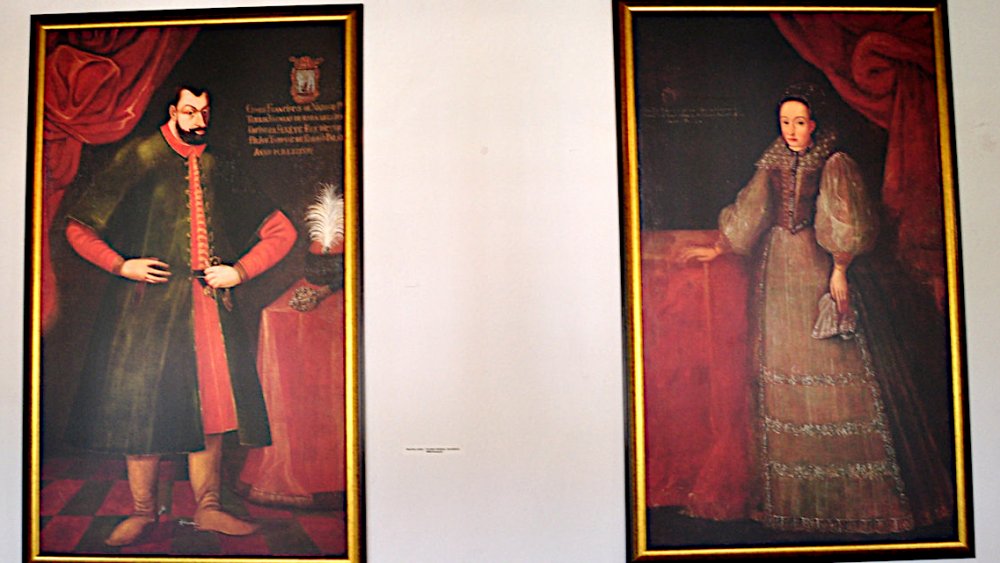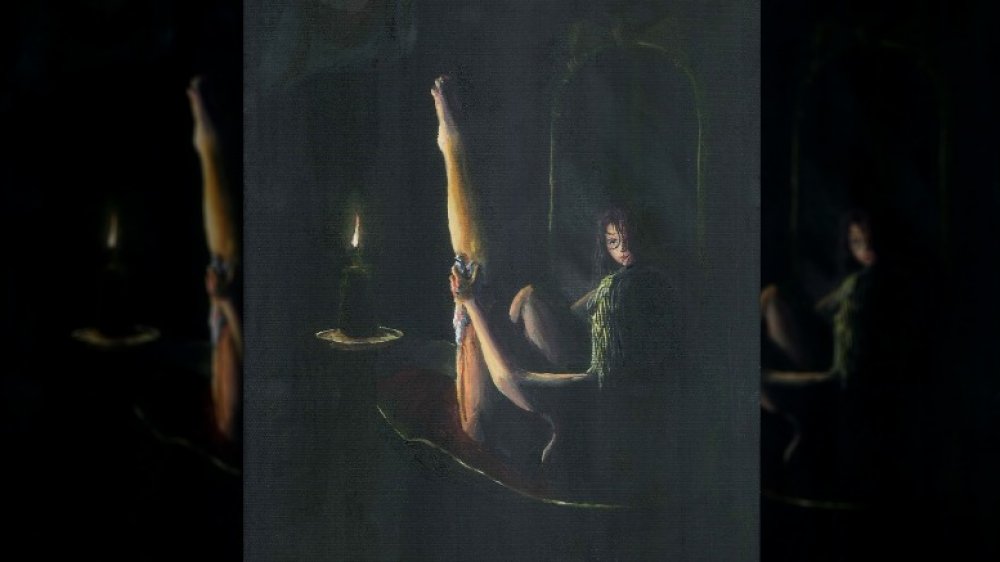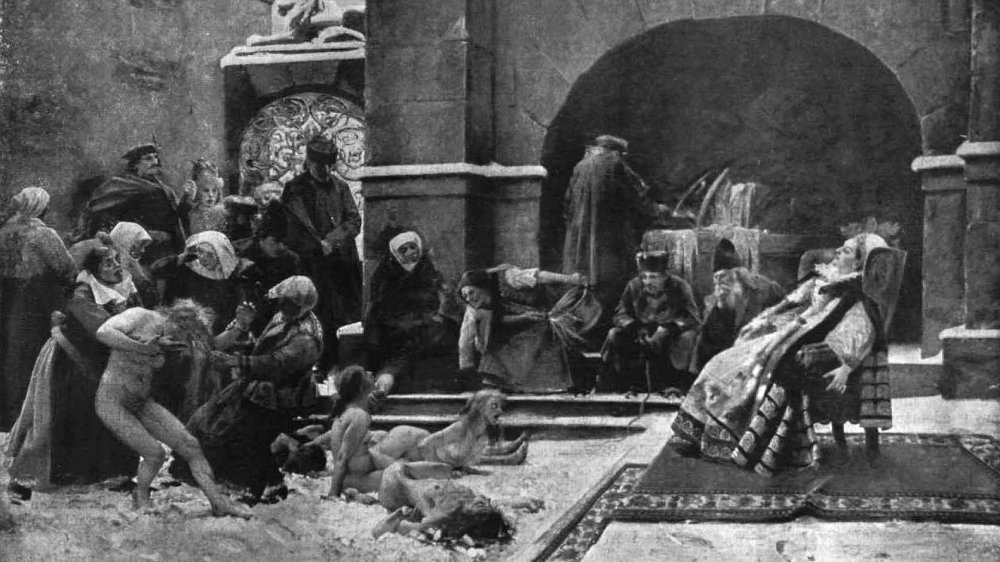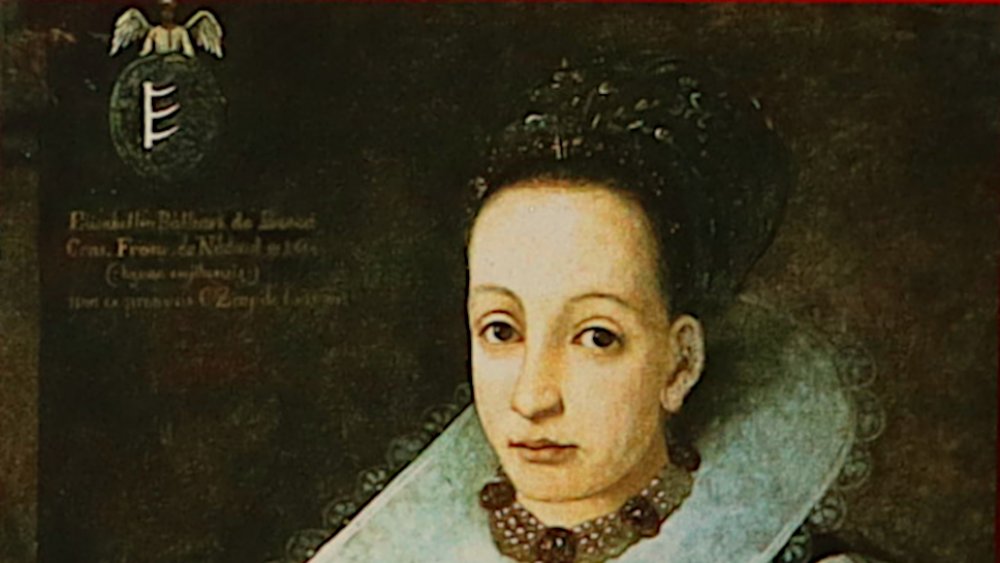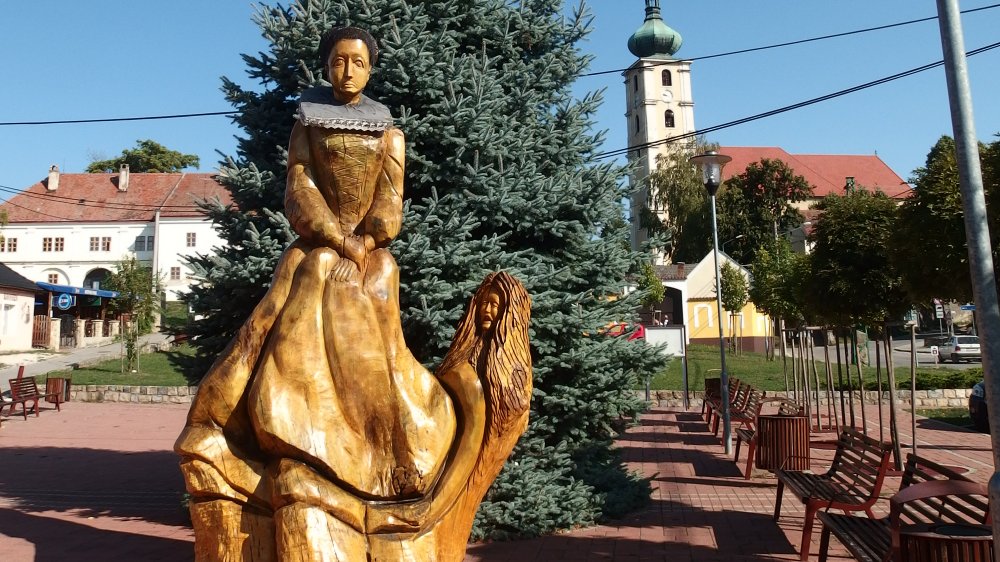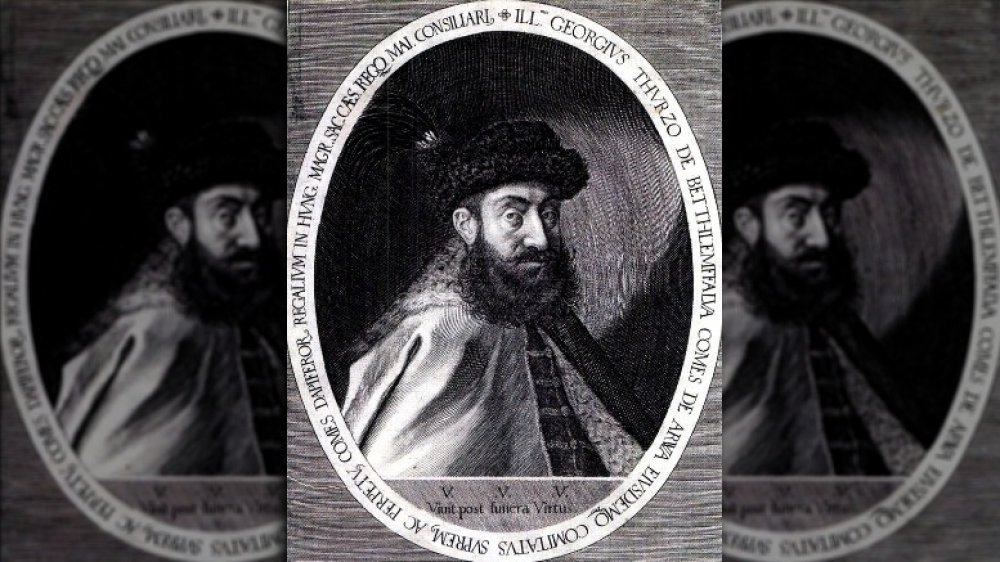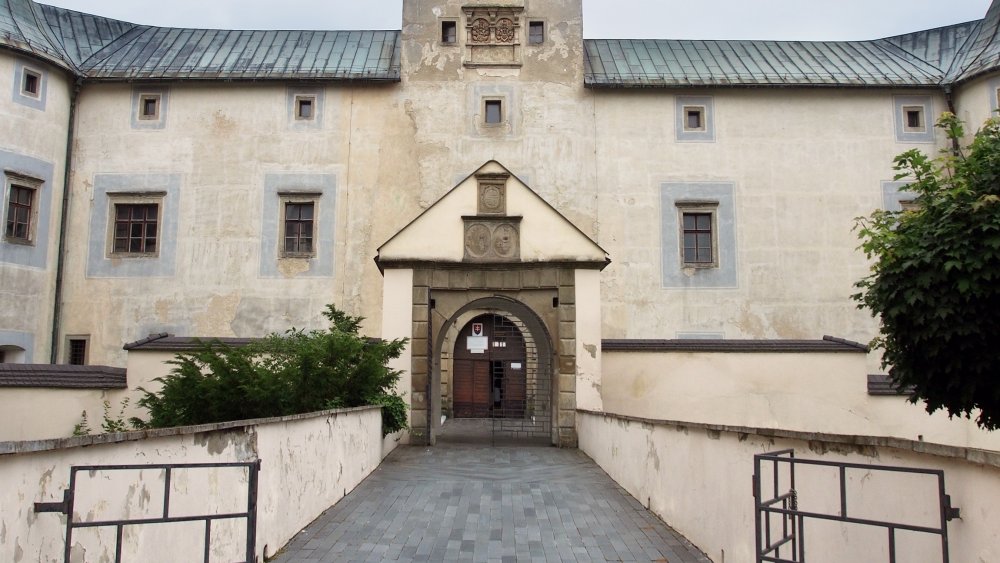The Crazy Real-Life Story Of History's Most Prolific Female Murderer
Over the centuries, the tale of Countess Elizabeth Báthory has acquired the status of legend. She was accused of murdering upwards of 600 young women, which earned her the title of the most prolific female serial killer of all time. Stories of her murderous tendencies spread over the years and her reported obsession with exsanguination earned her the nickname "the Blood Countess."
However, the authenticity of these claims is highly debatable. Many of the testimonies made against her were likely acquired through coercion and torture and she herself was never put on trial. Elizabeth Báthory's story eventually faded out of memory, but in 1720, a Jesuit scholar named Father László Turóczi revived the tale and imbibed it with unverifiable and monstrous qualities.
While the extent of her cruelty may have been exaggerated, Báthory lived in a time when cruelty towards peasants was commonplace and she most likely engaged in some abusive behavior. However, it's also not unlikely that Báthory was the victim of a conspiracy to usurp her power and her land. Ultimately, the truth of what she did will never be known, making her one of the most beguiling figures in history. This is the crazy real-life story of Elizabeth Báthory, history's most prolific female murderer.
Elizabeth Báthory was born into power
Countess Elizabeth Báthory de Ecsed, also known as Báthory Erzsébet, was born in Nyírbátor, Hungary on August 7th, 1560, into an incredibly powerful Protestant noble family that ruled most of the region. While her family controlled what was then Transylvania, her uncle Stephen Báthory was the king of Poland from 1575 until his death in 1586.
According to Biographics, Elizabeth Báthory enjoyed a lavish upbringing and education, learning to speak Hungarian, German, Slovak, Latin, and Greek during her formative years. But she also suffered from health problems as a child, speculated to be epilepsy, and was prone to seizures.
Growing up, Báthory witnessed a great deal of violence. According to Medical Bag, she reportedly watched her parents carry out abusive punishments against the family's servants or those accused of crimes. One story claims that when a Romani man was sown alive into the body of a dying horse, the 10-year-old Countess Báthory laughed at the sight. Her uncle was also reportedly interested in Satanism and it's claimed that her aunt taught her in the ways of sadomasochism. However, according to The Toast, historians disagree as to whether Báthory developed her reported sadism during her childhood or if it came out of the influence of her husband, Count Ferenc Nádasdy.
Marriage to Ferenc Nádasdy
When Elizabeth Báthory was 10-years-old, she became engaged to the 15-year-old Count Nádasdy, who also came from a prominent Hungarian noble family. According to The Toast, Báthory had been engaged for three years when she was impregnated by a lover from a lower class. As a result, she spent most of 1574 in isolation, and after the birth Countess Báthory's family sent her infant daughter to a peasant family. According to History Today, some reports claim that when he found out, Nádasdy ended up having Báthory's peasant lover castrated and torn apart by dogs. But with the child hidden, Báthory and Nádasdy married in 1575.
The two lived between the Nádasdy castles at Sárvár, Hungary, and Castle C̆achtice in what is now Slovakia. Nádasdy was an ambitious soldier and was frequently off on military campaigns, especially once the Long Turkish War began in 1593, leaving Báthory to run the estate.
Nádasdy reportedly taught Báthory new methods of torture, such as putting rolls of oiled paper in-between someone's toes and lighting them on fire, because she needed to know how to discipline the servants while he was away. Nádasdy also allegedly gave Báthory a clawed glove with which to scratch the faces of disobedient servants, and let her use his own torture devices, such as a whip with pincers attached at the end.
The rumors began in 1602
Although the rumors started to circulate more widely in 1604, the first whispers of Báthory's and Nádasdy's abusive behavior began in 1602. According to History Collection, the Lutheran minister of Sárvár, István Magyari was the first to question the number of dead servants being brought out of the castle for burial. Although Báthory claimed that the deaths were due to cholera, Magyari was suspicious at the unusually high number of bodies. Despite Magyari's complaints to the authorities, nothing happened because the servants who'd died were peasant women. According to Biographics, one priest even addressed his concerns to Báthory herself, in response to which she flew into a rage and left her husband to deal with the priest.
Rumors also began to circulate that Báthory tortured and murdered servants in secret chambers that she had in her house. Other tales claimed that she watched people freeze to death in the winter, while in the summer she'd cover her victim's body with honey and leave them to the insects. Some accounts say that Nádasdy encouraged her abusive and murderous behavior, while others claim that he reined in her bloodlust.
Meanwhile, Nádasdy's health had began to decline and in 1601 he was paralyzed from the waist down. According to The Toast, after being stabbed by a sex worker for refusing to pay her for her services, Nádasdy died from the infected wound in 1604.
Legend of the Blood Countess
While Báthory was most likely abusive and cruel, her behavior is said to have become unrestrained after her husband's death. According to Elizabeth Báthory: The Blood Countess, Báthory became known for her obsession with youthfulness and soon stories were circulating about her literal bloodlust. While the story of her bathing in blood was seemingly added later on, many claimed that Báthory thought that the blood of young women was rejuvenating.
According to Medical Bag, the story goes that Báthory was having her hair brushed when the attendant accidentally tugged at a snag in her hair. Furious, Báthory hit the attendant so hard that she drew blood from the attendant's face. Some blood got onto Báthory's hand, and later in the night Báthory noticed the skin on her hand looked youthful and felt softer in the places where the blood had gone. After this incident, Báthory is said to have become obsessed. In addition to bathing in the blood of dead women, Báthory is said to have drank their blood. Sometimes she'd use a golden flask, but after some time she's reported to have drunk blood directly from the victims.
However, this legend comes from Michael Wagener's book Articles on Philosophical Anthropology. Published in 1796, almost 200 years after Elizabeth Báthory's death, it widely publicized many of the unsubstantiated rumors about Báthory's behavior as fact.
Elizabeth Báthory was probably not a very nice person
According to the accusations against her, Elizabeth Báthory liked to torture her victims in a variety of ways. While it's likely that tales of her cruelty were embellished, it's also likely that she probably was pretty abusive. During the 16th century, it was common for peasants and servants to get tortured by nobles, so Báthory's behavior wasn't so out of the ordinary.
She was said to have sown servants' mouths shut, burnt their genitals, and stuck needles under their fingernails. According to History Today, Báthory stabbed and cut servants with scissors, burned them with irons or coins, or simply starved them to death. She was even alleged to have bitten off pieces of servants' flesh, sometimes from bed if she was too sick to get up to beat someone.
According to Biographics, Báthory also had a steady supply of victims since she had almost 400 peasant women and girls working as servants across her estates. In an attempt to maintain her vast network of servants and victims, she began luring peasant girls to her estate with the promise of work. Her victims were usually aged between 10 and 14.
Can't always do everything alone
Elizabeth Báthory didn't work alone. Several servants reportedly helped with her murderous activities. Her main accomplice was said to be Anna Darvolya, also known as Darvulia. According to History of Royal Women, Darvolya became a part of Báthory's household in 1601. Many of Báthory's servants later testified that Darvolya encouraged Báthory's sadism and instructed the other servants on assisting in the torture as well.
Báthory also recruited Dorottya Szentes, Katalin Beneczky, Ilona Jo, and a young boy named János Újváry, also known as Ficzkó. Together, they all reportedly terrorized the servants of Báthory's estates. But Báthory also incorporated other nobles in her hunting. According to History Collection, noblewomen such as Lady Szell, Lady Judith Pogan, and Lady Anna Welyker worked as "girl catchers" for Báthory, replenishing her supply of servants. Báthory's youngest daughter Katalin was also reported to have participated in her mother's activities.
According to Elizabeth Báthory: Vampire, Witch or Serial Killer?, after Darvolya died in 1609, Erzsi Majorova, who many believed was a witch, became Báthory's main cohort. Majorova was thought to be the mastermind behind body disposal, but she's also thought to be the reason that Báthory was caught. After Báthory started having difficulty obtaining servants willing to come work at her estates, she took Majorova's suggestion to start trying to lure noble girls as well.
Pretending to teach manners
By the end of 1609, Elizabeth Báthory had established a gynaeceum, or etiquette school, for young noblewomen. According to Biographics, she may have opened the school due to mounting debts and the desire for income, or because she was running out of victims from peasant families.
But soon even these girls were disappearing as well and the loss of their presence didn't go unnoticed. However, Báthory always managed to have a neat cover-up story. In one instance, she even claimed that one of the girls attending the etiquette school had murdered several girls before committing suicide.
But few believed her and, having more power than the families of peasant victims, the noble families appealed to the King of Hungary Matthias II for help. According to The Vintage News, Báthory's behavior was swept under the rug for years because her relatives administered the local councils and courts. But once she started targeting noble families, her abusive activities could no longer be ignored and King Matthias II instructed Count György Thurzó to investigate the allegations against her.
Thurzó collects his testimonies
Count György Thurzó had been a close friend of Nádasdy and had promised his dying friend to protect Elizabeth Báthory, who also happened to be Thurzó's cousin. During his investigation, Thurzó collected reports from over 50 witnesses and became convinced that Báthory was guilty. However, according to Biographics, none of the people whom Thurzó interviewed had personally witnessed anything and many were merely repeating hearsay. Only Andreas Somogy may be considered a physical witness, having allegedly seen a girl whose hands had been burnt. Despite claims of hearing sounds of a whip and screams of pain, no one could give hard evidence of torture. Even doctors who'd been called to the castle said that they hadn't seen any signs of abuse on their patients, although admittedly they'd only seen the patients' faces.
According to History Collection, Báthory knew of the investigation and tried to invalidate the charges against her. In August 1610, Báthory brought the mother of a deceased girl from Báthory's etiquette school into court so that the mother could testify that her daughter's death was from natural causes.
After her arrest, Thurzó continued to take depositions from locals, amassing over 300 different witness testimonies and reports. In the end, Thurzó attributed 80 victims to Báthory, although some claim that Báthory herself counted over 600 victims, which according to the Guinness Book of World Records, makes her history's most prolific serial killer who was a woman.
Some say she was caught in the act
Some versions of the story claim that György Thurzó caught Elizabeth Báthory in the act of torturing servants when he came to arrest her in the night. Finding several mutilated bodies by the doorway, they also heard the sounds of screams coming from inside, which led them to Báthory's torture chamber. Some accounts say that Thurzó caught Báthory red-handed in the middle of a torture session, but this was likely fabricated later.
However, according to History Collection, there is little evidence to support any of this. In fact, Thurzó had found a single injured girl, named Anna, who initially claimed that while Báthory had beaten her, Katalin Beneczky had been the one to rip her flesh. She later changed her story and claimed that Báthory was the one who'd destroyed her right arm and hand. Thurzó later awarded Anna a small farm in C̆achtice, 15 pounds of wheat, and 50 guilders, so it's worth questioning whether or not her testimony was the result of a bribe.
A nighttime arrest and a shady trial
Regardless of how he caught her, György Thurzó finally arrested Elizabeth Báthory and all her servants on December 30th, 1609. However, Thurzó felt guilty about betraying his dead friend and had already come to an agreement with Báthory's relatives. According to Biographics, they had agreed upon Thurzó completing his investigation, but had decided that Báthory herself was not going to be brought to trial due to the embarrassment that it would cause the family. And while her relatives insisted that Báthory was innocent, they had already come up with a plan to permanently imprison Báthory in her castle and distribute her lands and assets amongst themselves.
After the arrests, Thurzó obtained more witness testimonies, most under torture. Many of the servants tried to put most of the blame on Anna Darvolya or accused one another but as the torture continued they shifted the blame onto Báthory.
In 1611, Báthory's servants were put on trial and Erzsi Majorova, János Újváry, Ilona Jo, and Dorottya Szentes were executed as accomplices. Ilona and Dorottya also received a formal sentence of torture and had their fingers individually torn out with hot pincers before being burned alive. According to HeadStuff, despite the fact that Báthory was not present or directly charged at the trial, in the eyes of the general public the trial turned into an indictment of her.
House arrest for the rest of her life
Although Elizabeth Báthory avoided a public trial or conviction, she was placed under house arrest and solitary confinement in C̆achtice Castle. According to Atlas Obscura, Báthory had originally been placed under house arrest during the trial, walled into a dark windowless room in a castle tower, and was then kept there after the trial finished.
According to The Toast, although King Matthias II wanted a public trial and conviction against Báthory, her family did everything in their power to prevent that from happening. If Báthory was given over and convicted, then the King had a right to take her land. But by keeping Báthory locked up in the castle, the property remained in the family.
Báthory attempted to escape once, but she was caught and never had the chance to try again. For three years she was kept in the walled-in room and was given food through a small passage, until in August 1614 she was found dead on the floor. She was buried in a local cemetery but, according to HeadStuff, so many locals complained that as a result she was moved to the family tomb in Ecsed, Hungary. It's unclear if her remains ever actually made it there, though, since her tomb was reportedly empty when it was opened in 1938.
Or maybe Elizabeth Báthory was the victim of a plot
Despite the seemingly abundant evidence against Báthory, she may have been the victim of a conspiracy. According to All That's Interesting, King Matthias II had owed a large debt to Count Nádasdy, which had transferred to Elizabeth Báthory after her husband's death. Had Báthory been convicted, he would've acquired her vast lands. But György Thurzó was able to convince the king that Báthory was better off being hidden out of sight in order to limit the damage that would've done to the Báthory-Nádasdy family and to Hungarian nobility in general. In exchange, the Báthory-Nádasdys agreed to cancel King Matthias II's large debt.
It's possible that her family was targeted for being Protestant during a time when tensions were escalating between Protestants and Catholics in the run-up to what would become the Thirty Years War in 1618. Her family also didn't have the best relationship with the ruling Catholic Habsburgs. Since there were few rumors about Báthory before her husband's death, it's also possible the rumors came out of pure resentment.
According to HeadStuff, many of the stories about Báthory came about after-the-fact. In 1729, Jesuit historian Father László Turóczi repeated tales of her bloodlust uncritically. Although the veracity of some of the stories were challenged over the years, her associations with Transylvania and blood made her an ideal addition to the vampire legends.
